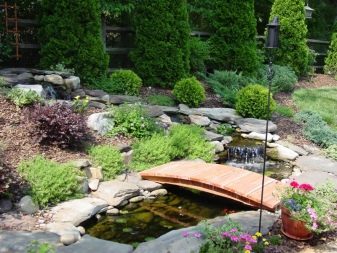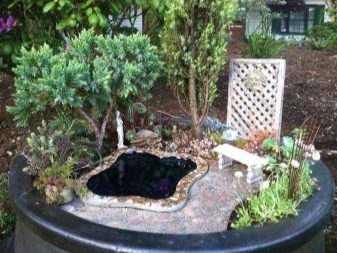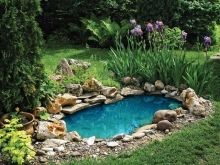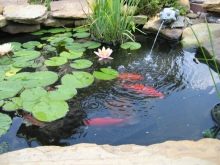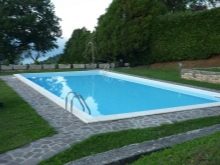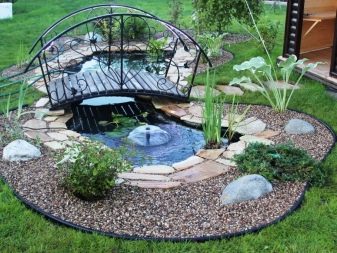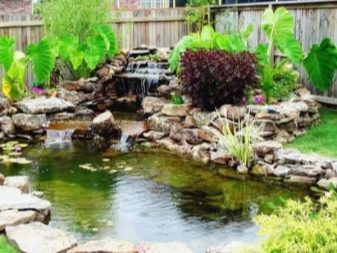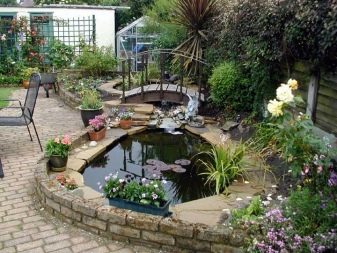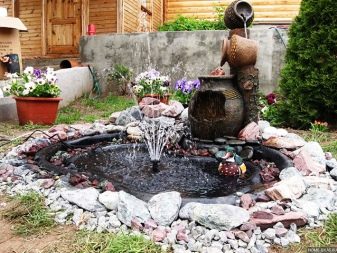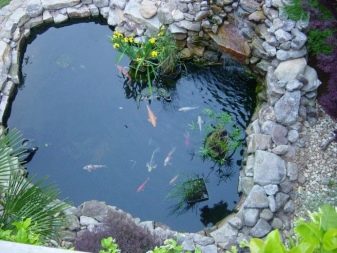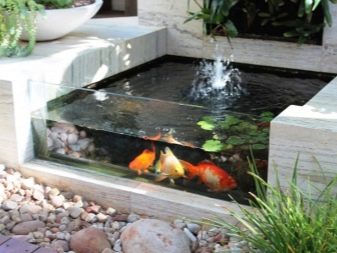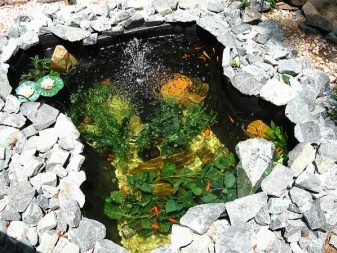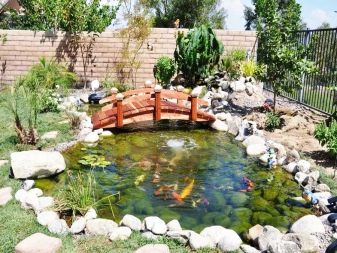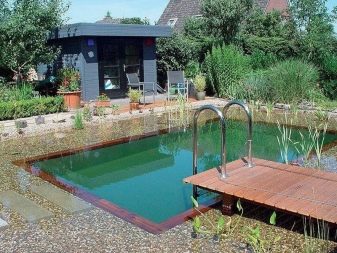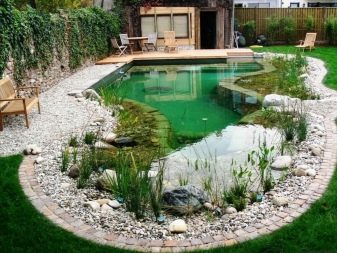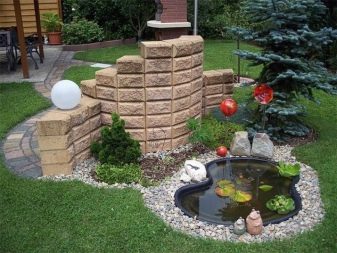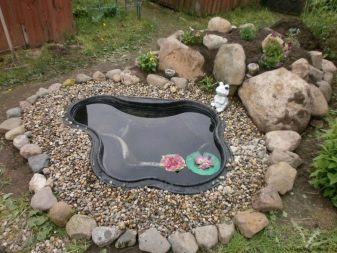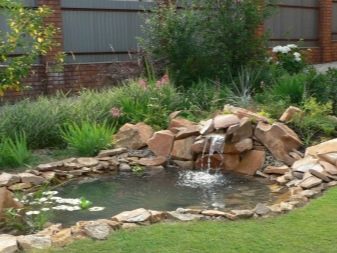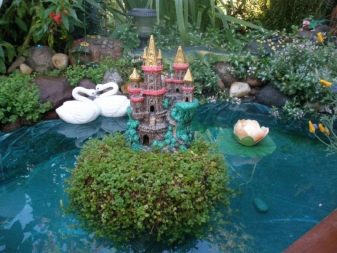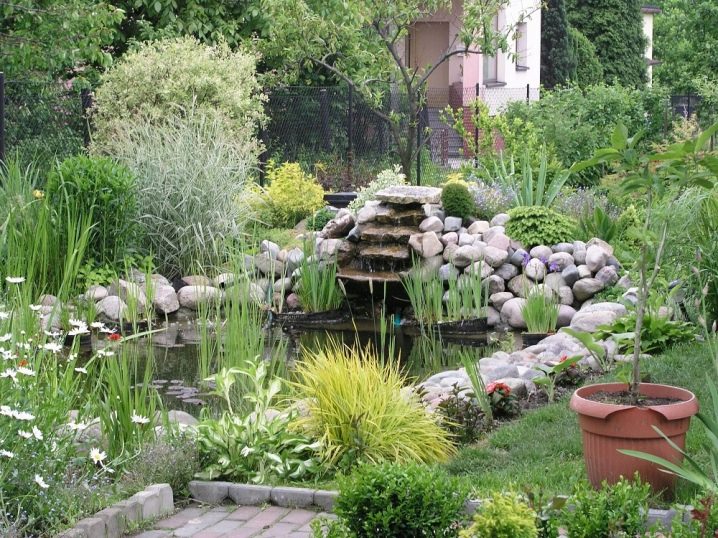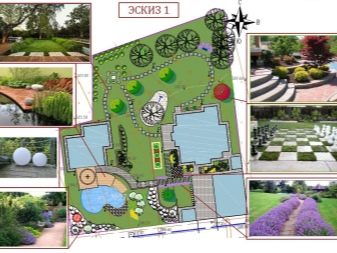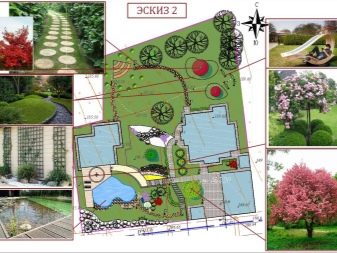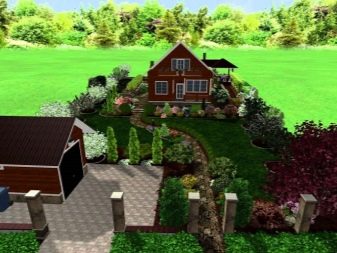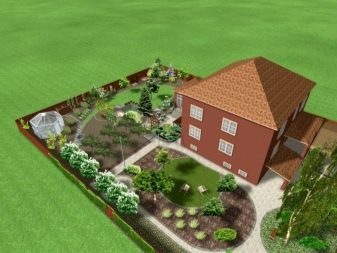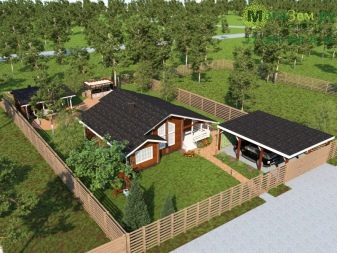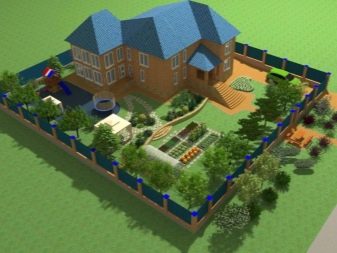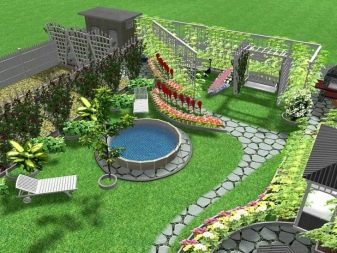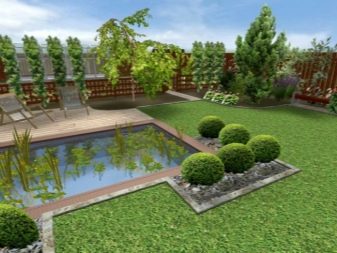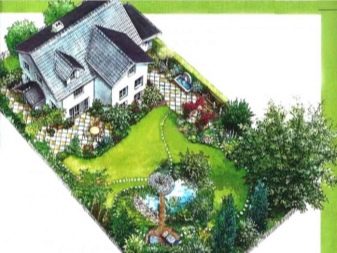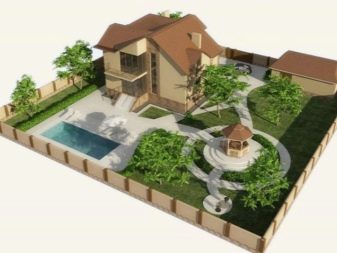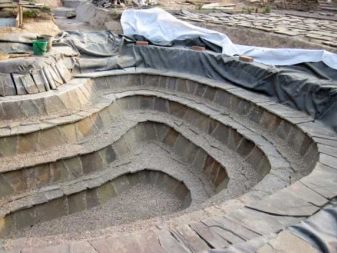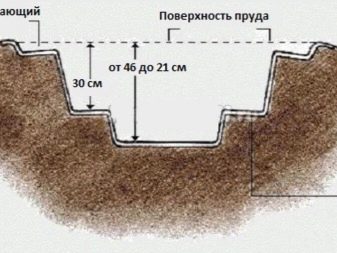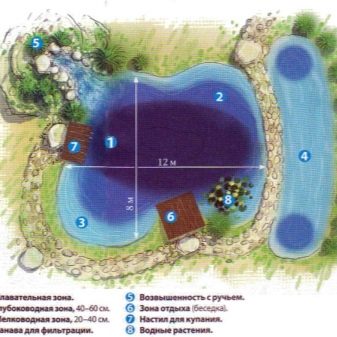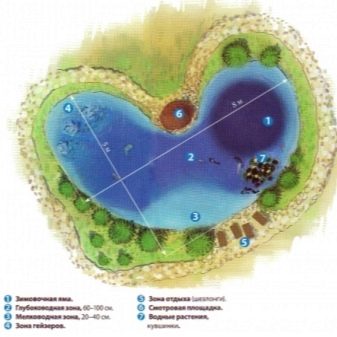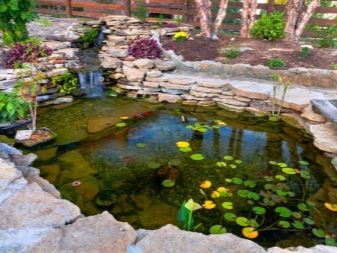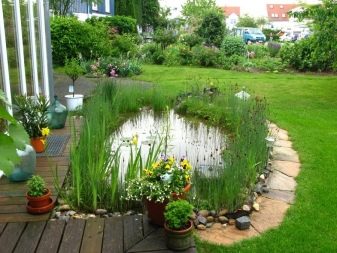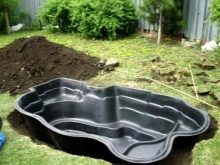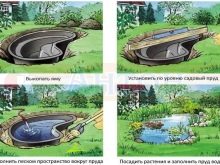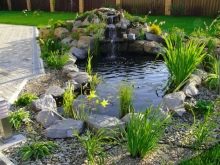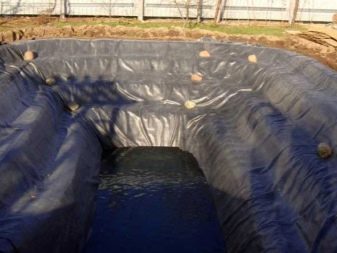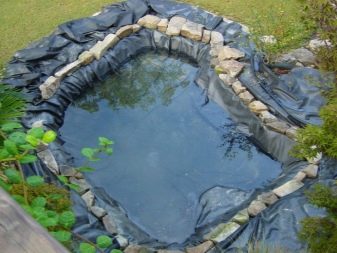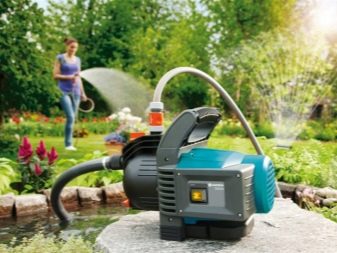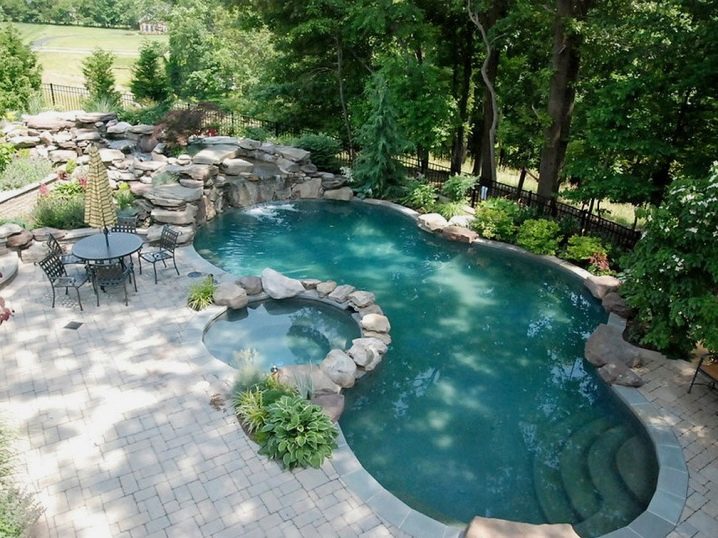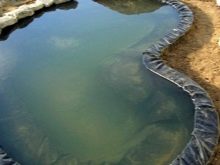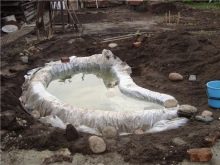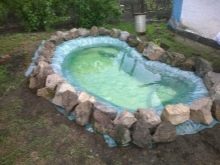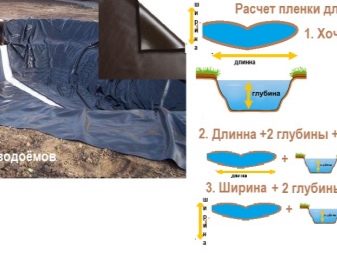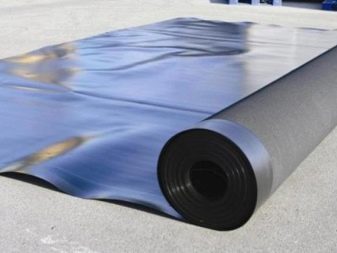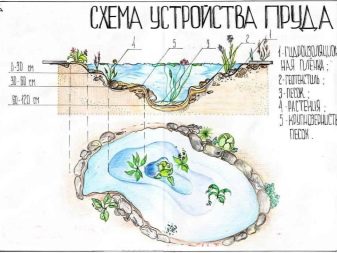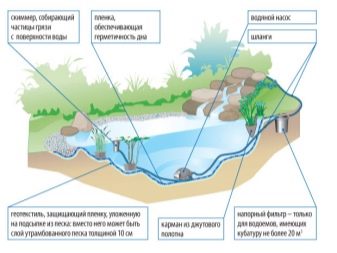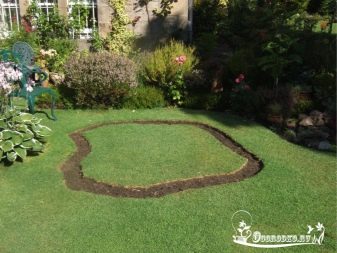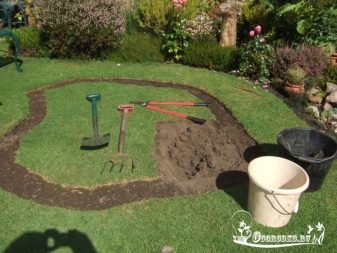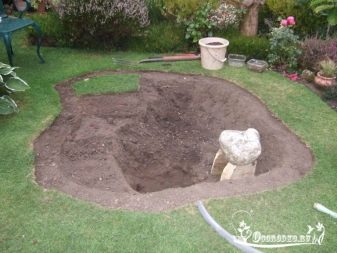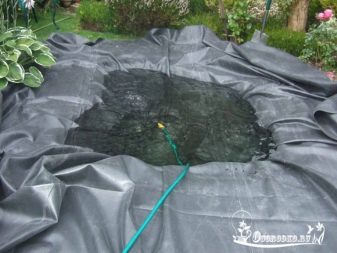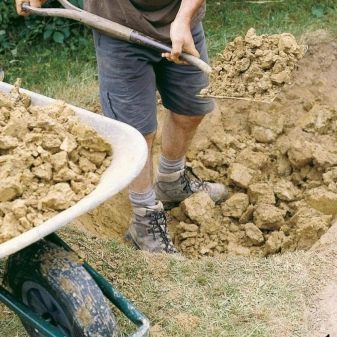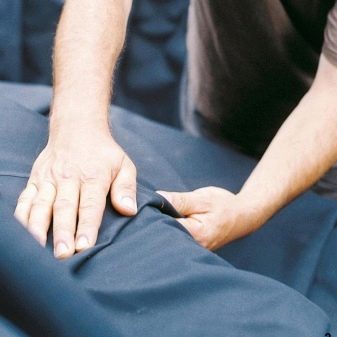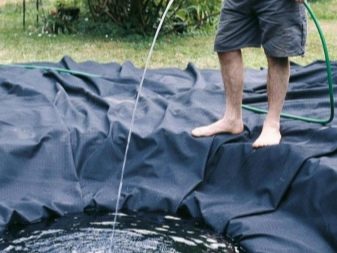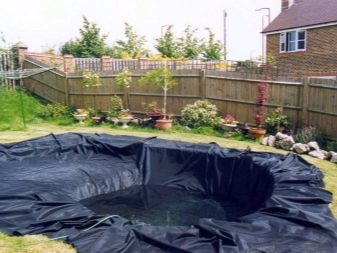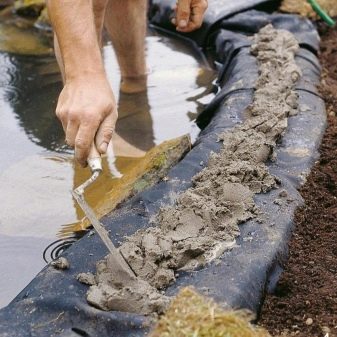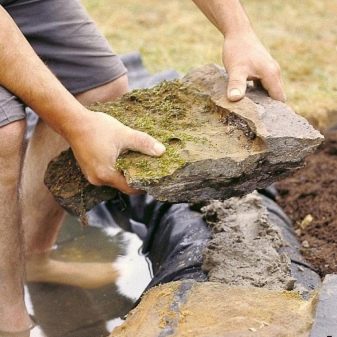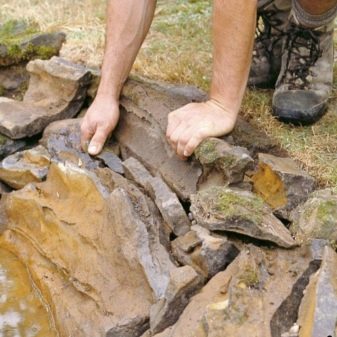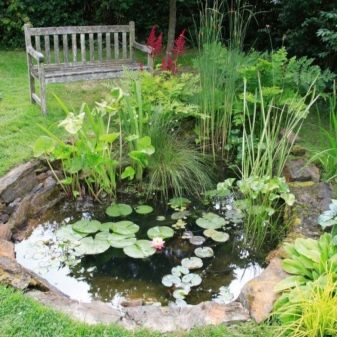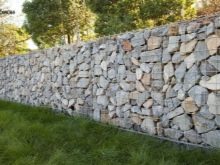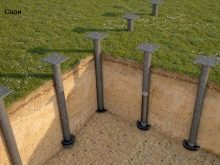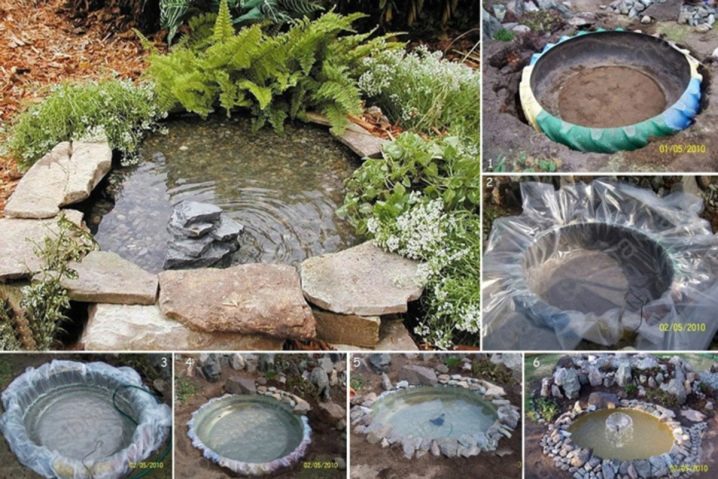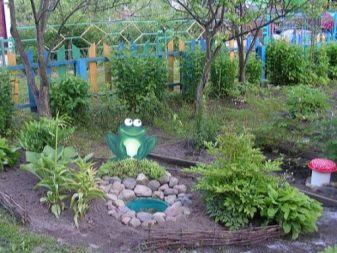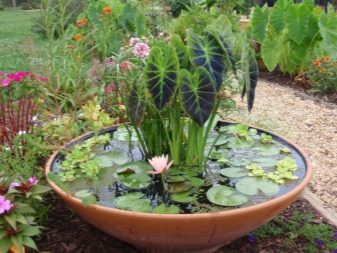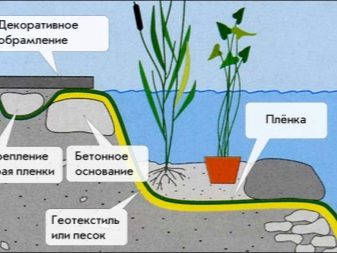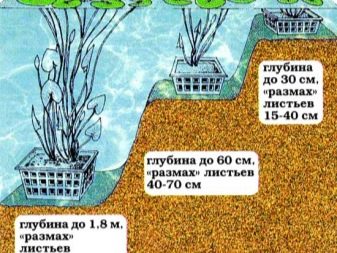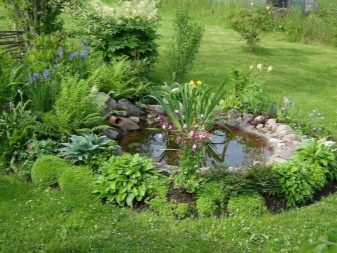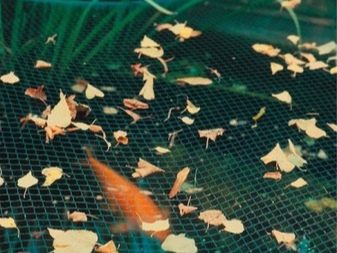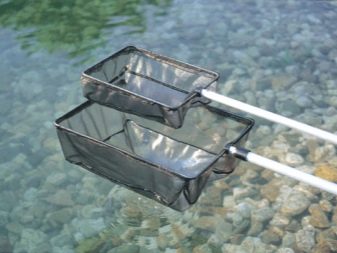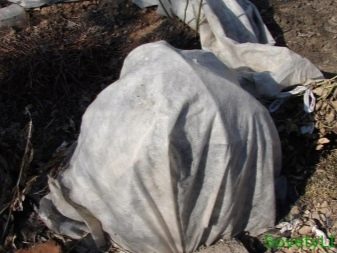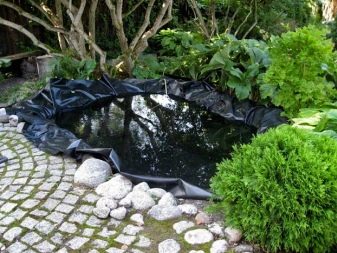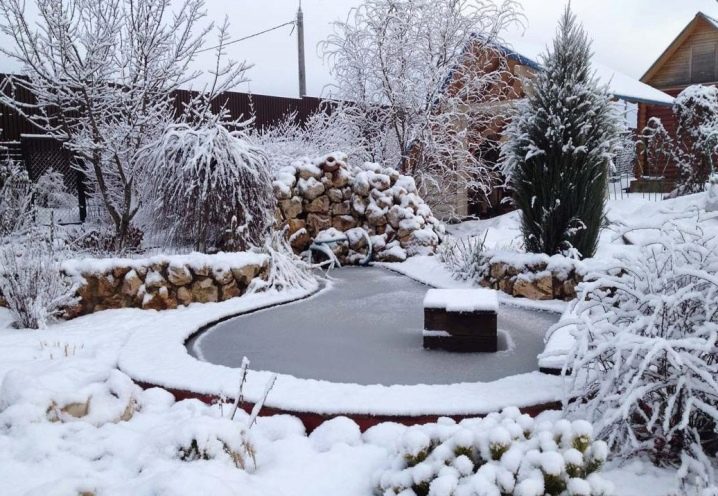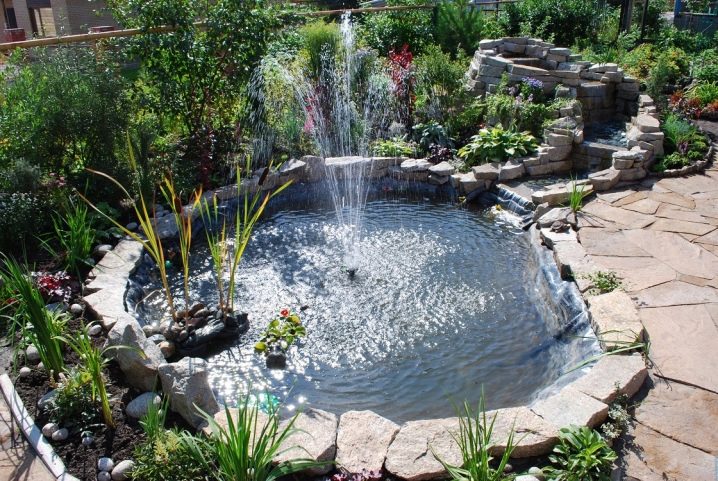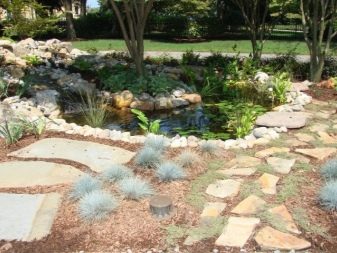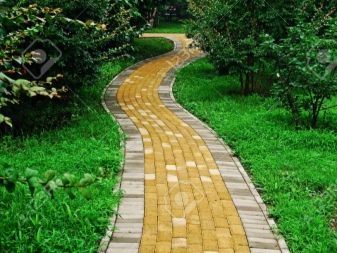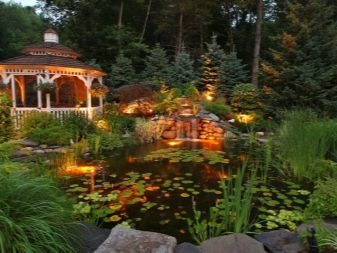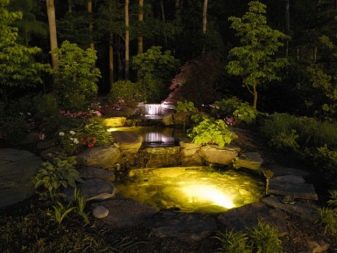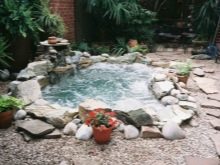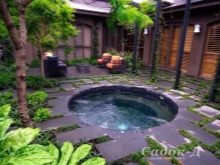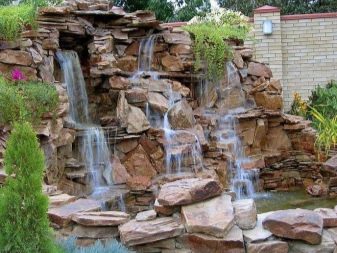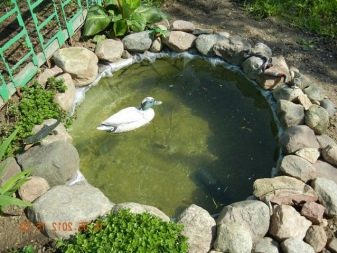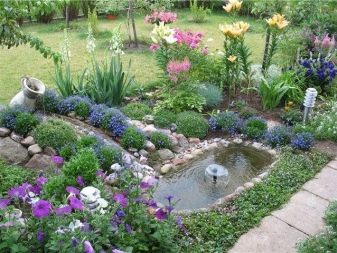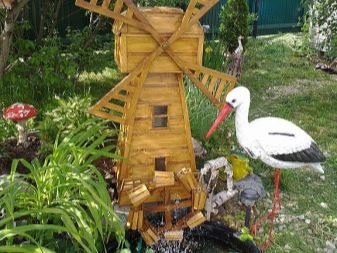How to make a pond in the country with their own hands?
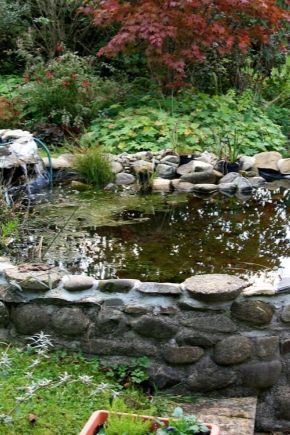
How pleasant it is to sit by the pond on a sunny day, admire the water surface, relax and have a rest. But what if there is no reservoir nearby? Build it yourself on your site! This does not require colossal financial influences. About all the nuances of creating and arranging a small dacha pond and will be discussed in our article.
Purpose
If you have conceived to equip the landscape of your site and decided that you should certainly have a pond in the yard, then before you start work, you need to determine what functionality the reservoir will have on your site.
According to their purpose, ponds can be divided into three types:
- decorative;
- fish pond;
- for swimming (swimming pool).
Decorative
A decorative pond may be small, built exclusively to decorate any area of the garden. Being a component of landscape composition, it can be its final touch or an original addition to a design project.
This pond is created with an aesthetic purpose: it is pleasant to admire it while sitting in the garden.
Ornamental ponds can be even bigger: the pond itself is deeper, the compositions are larger, where bridges, fountains, streams, lights can serve as decor. In addition to the pleasant sight, these ponds are also a place to relax: on a warm summer day you can sit around the pond in the sun loungers and get your dose of ultraviolet radiation.
For breeding fish
Who among us does not dream to watch the fish frolicking in our own pond and pleasing the eyes of the household? In addition to the decorative function, such a pond will also perform the function of an antidepressant: the fish swimming in the pond is an excellent sedative and relaxing agent.
Such a pond should be large enough for your fish to feel comfortable. It can be absolutely any form.But whoever you plan to breed - crucian or duck - do not forget about the need to filter the water, as well as enriching it with oxygen.
For swimming
Homemade swimming pond - salvation on a hot summer day! The size of such a pool will depend on your wishes and on the capabilities of your site. If the size of the plot allows, then you can build in your yard a beautiful pond in which you will swim in the summer. You can also get by with a smaller pool, which will be just as pleasant to just dip in to refresh yourself on a hot day.
Artificial reservoir style
Conventionally, ponds can be divided into two large main groups, each of which has many varieties:
- regular pond;
- landscape pond.
Regular pond is created using the finished form. Surely you have thought through the landscape project in advance, so you already have a good idea of how a home's reservoir should look like. Based on the wishes of the pond design, you can choose the appropriate ready-made form: they are not only regular geometric, but also more complex types: broken, asymmetric, and so on.
The landscape pond differs from the regular one in that it does not use a ready-made form for its construction. Therefore, it can be given any configuration.
The size and appearance of the reservoir can also be different: you can build a small pond in the Japanese style, the main advantage of which is simplicity, but you can give free rein to your imagination, not limited to the standard circular shape and create a large reservoir filled with various decorations.
How to make a pond with your own hands?
Suppose that you have decided on the look and functionality of the pond. Now we will consider how to practically implement the conceived idea.
Where to begin?
Of course, one should begin with determining the location and size of the future pond. The choice of location is very important. Still, the pond, even if it is functional, should please the eye of the owner, complement the landscape composition, perfectly fit into it, or even become an accent in your design project.
When choosing a place for a pond in a country house, you must take into account not only and not so much its visual advantages, but also a number of other factors that influence the choice of place:
- Plot size. Of course, the size of the pond will be what the size of your garden allows it to be.
- Relief plot. Different relief allows to achieve different results: on a flat surface you can create a wonderful laconic pond, the water in which will please the eye with its smooth surface; uneven surface allows you to fantasize with fountains and waterfalls.
- Groundwater level and soil. You must consider these factors when determining the depth of the pond (you may need certain consumables and additional forces).
- Lighting. It is preferable to find the pond in the shade: exposure to direct sunlight for a long time will increase the evaporation of water, and microorganisms living in the water, become more active, and the reservoir will lose all its attractiveness. To avoid this, when choosing a place, pay attention to the light mode. Especially it concerns small reservoirs and reservoirs with fishes.
- Environment. Of course, the trees and shrubs surrounding the pond look very attractive, but do not forget that the foliage falling from these plants will pollute the reservoir, and the close proximity of the tree roots can ruin the waterproofing.
- Power supply. Particular attention should be paid to the location if it is planned to decorate the pond with fountains or lighting in order to think over electrification of this part of the summer cottage in advance.
- The prospect of expansion. You should always take this moment into account, perhaps in the future you will want to increase the pond itself or expand the recreation area by the reservoir, if you want to fix or redo it.
For this, be sure to leave a piece of empty space in the garden on one side of the pond.
- Consistency with other buildings: after all, the pond is part of the overall composition, so it is necessary to take into account the general view of the dacha plot, while thinking through the design of the reservoir.
- And finally, the visual component. Of course, the pond should be pleasing to the eye, so its location must be organized so that it can be seen from most places in the garden.
The size of the pond, of course, depends on the size of the site, but not only from this. Even the size of the reservoir depends on your design project, after all, simply on your desire.
So, consider the basic parameters:
- Dimensions. There are no specific recommendations regarding the pond area. Some sources have informationthat the reservoir should be located on a plot of approximately 10% of the total garden area, but these are not fixed standards.
- Length and width. These parameters are taken into account based on the total size of the area. If you dig a hole for a reservoir with your own hands, then they also depend on your physical abilities.
- Depth. Depends on the dimensions of the reservoir, its potential functionality, the soil and your physical strength (again, if you dig the foundation pit yourself).
- Zoning Experts identify three parts:
- Coastal (100-300 mm): there are plants growing in shallow water, and there is an entrance to a reservoir.
- Shallow water (300-900 mm): here is a place for other plants that live more deeply.
- Deep water (from meter and further): a zone necessary for fish habitat. The larger and more diverse the living world of the reservoir, the greater the area allocated to the deepwater zone. Also keep in mind that in winter the fish in the pond does not freeze, the lower part of the pond should be located below the ground freezing level.
- Content. Haveamazingly, but it is easier to take care of a large body of water than a small one.
What is needed?
When you have decided on the location and size of the future reservoir, it is time to buy materials. Now on the market of building and finishing materials you can buy everything you need for the arrangement of the pond:
- One of the most financially costly options - concrete pond. This reservoir will serve you for a long time, but consider the functionality of the future pond: if you are going to build a pool, then this option may be the best choice for you, but if not, explore other options and choose the most suitable one for you.
- Plastic containers - easier option. They are of different composition (from polyvinyl chloride or fiberglass), so their service life is also different: on average, from 10 to 30 years. The installation of the bowl is simple, so this option is quite convenient: you need to dig a hole, set the shape, fill the voids with sand. However, there are also disadvantages in this version: plastic forms are quite expensive, they also need to be transported with special care, they are unstable to ultraviolet, but they are resistant to frost.
The best choice in this case is a fiberglass shape with a rubber base.
- Film: regarding the variety of forms, the polymer film is an excellent material for covering the bottom of the pit for the reservoir. Polyethylene film is inexpensive, affordable and easy to use, but its service life is short: too fragile and thin. A film of polypropylene or polyvinyl chloride (PVC film) is more dense, therefore, more reliable - will last longer. Instead, by the way, the banners used in promotions will do (unwanted advertising posters can be bought at a low price).
The strongest and most reliable film is butyl rubber: it will last up to 50 years, it is also resistant to frost and very durable.
- You will also need the following materials and tools: a shovel, a hose for irrigation, a cord (for marking), stakes, a wheelbarrow for exporting the earth, a cleaning filter (especially relevant for reservoirs where fish are bred), a pump (it uses the pressure necessary to fill the water, it will also need constructions of fountains and for the operation of cleaning filters), a sterilizer (needed for water purification), a compressor (aerator) (necessary for reservoirs in which fish live, as it saturates water with oxygen).
Plan and calculations
So, you have thought over how your future pond will look like, found a suitable place for it, decided on the size, materials, but you still do not know how many materials you will need to build your dream pond. To find out, we will make calculations and, based on the size of the pond, we calculate the optimal amount of materials needed for its construction.
Suppose we decided to use polyvinyl chloride film (PVC) as a basis, since this material is affordable, durable and easy to use, and also to be repaired.
PVC film can be of different colors: black, brown, blue (or cream):
- black film will close the bottom and allow you to observe the reflection of the sky on the surface of the reservoir;
- brown film in color resembles the present bottom, which will make the reservoir more realistic;
- a light film (blue or cream) will allow you to see its inhabitants under water, for example, fish.
When buying a film, you should take into account the composition (PVC is more durable than, for example, polyethylene film) and thickness (we need a film whose thickness is more than half a millimeter).
Also pay attention to the manufacturer, strength, resistance to ultraviolet radiation and the absence of toxic substances.
To calculate how much material you need is quite simple: you need to use the following formula:
- The length of the film is equal to the length of the reservoir + 2 depths of the reservoir + 400-500 mm just in case.
- The width of the film is equal to the width of the reservoir + 2 depth of the reservoir + 400-500 mm just in case.
It is necessary to glue the film bought in the same place, in a hardware store, with glue, for example, “Tangit” or adhesive tape.
Once you understand the film, you have to make a sketch of your pond. First, draw a mini-sketch on paper, and then directly on the ground indicating the depth and width of the tank, as well as the depth and width of the steps. You can write with a garden hose or sand - it is convenient.
Manufacturer: Walkthrough
After all the preparatory stages have been successfully completed, you can proceed to the main steps:
- Remove the top layer of soil.
- We dig a hole.
- We delete the earth.
Everything sounds quite simple, but be careful, do not forget to take into account all the necessary excavations in the future (for plants, for steps, etc.), as well as the features of your reservoir (waterfall, pond, pool). When installing the pool, a large trench will have to be excavated, as with full-scale construction.
When the job was done, the excavation pit was dug up, and the walls were properly tamped, you can proceed to waterproofing. If she does not pay close attention, then the water will flow into the soil, but we do not need it at all. If you act correctly, everything will turn out as it should.
There are three ways to form a substrate at the bottom of your pond:
- The easiest and cheapest way is to fill the bottom with sand and stones. But the result of this method is short-lived: several years and such a substrate will cease to function properly.
- Another way is to cover the bottom with geotextiles. The result, of course, is more durable, but the cost of this method is higher.
- This method is the most reliable: cover the bottom with PVC film. It is not very energy-intensive, and the result is the most durable.
Let us consider in more detail the third option, since its result will allow us to enjoy the pond in our garden for many years. The main thing is to act according to the instructions.
The fact that we have chosen the film method of waterproofing does not at all prohibit us before laying the film to fill the bottom with sand: this way we will protect the film from unnecessary damage by stones or roots.When laying, unfortunately, it will not work out at all to do without folds, but it is better to make one big fold than a lot of small ones: then you can press it with stones or stick it. The main thing is not to stretch the film, otherwise it will break under the weight of water.
To fix it, you need to dig out an additional rut, lay a film, fasten it with rods and sprinkle it with stones, and then lay the pit itself. When you cope with the film, you should pour water into your pit. Do it carefully, without a sharp pressure. Care should be taken: the film, although durable, but still from the wrong actions can deteriorate and tear. 1-2 days after the water inlet, you can cut the film.
Now it is necessary to strengthen the coast so that the pond looks beautiful and neat. Let's pay attention to the ground: if it is black earth or clay, then vertical walls can be made, if it is sand, then the walls should be inclined. It is believed that the ideal slope of the pond is 45 °. With such a slope, the coast does not crumble, and during the freezing period the ice does not bulge. Do not forget about plants: since the depth of planting is different for all plants, it is necessary to foresee the shelves for planting.
You can reinforce flat beaches with a geogrid or geomat, and steep banks with gabions, piles and retaining walls. By the way, there is an option for those who are not yet ready for such large-scale work on their site, but still want to be the owner of a small island of happiness in their garden. The pond can be built from the very very improvised. For example, from tires.
The pit will need much less deep, the film will need much less, and the joy in the end will be the same. The process of creation is extremely simple: you need to dig a hole to fit the tire, insert it into this recess, lay a film on the bottom, pour water on it, decorate it with stones outside.
This option is very simple. But there is even easier. The child will be able to carry out the next idea. Instead of tires, you can use a bowl.
Of course, the pond will be quite small, but if it is properly decorated, it will please the eye no worse than a full-fledged reservoir.
What plants to plant?
Of course, to make your pond look spectacular and attractive, you need to arrange it accordingly: to decorate it with plants. In order for your water body to be closest to the similarity with a natural water body, you need to do landscaping.
We offer several options:
- You can plant plants on the bottom of your pond. It is better to use local plants: they will take root faster.
- You can also plant different plants in some kind of tank.For example, in a barrel and put it around the pond. At the same time, you can plant everything your heart desires, choosing containers to your taste and, in accordance with the style of the pond and the garden composition as a whole: it will look spectacular, while not being separated visually from the overall picture. In addition, just replacing the container, you can easily change the appearance of the whole environment, if you suddenly get bored with the old look.
- The highlight of your design project can be a decoration in the middle of the pond. Put a beautiful stone in the middle of the pond and place a pot with some interesting plant on it or decorate it with some figure, for example, a mermaid. Such a move will certainly attract the attention of others.
Useful tips
- To keep the water in your pond clean for as long as possible, you need to protect it from falling leaves, branches and insects from the trees with a special grid construction.
- If, however, the leaves are in the water, a net will help you: just take out the unnecessary garbage from the water so that it remains clean as long as possible, and the pond pleased you with its beauty.But the net does not help get rid of debris from the bottom of the reservoir. Therefore, it is sometimes necessary to clean the pond with a water purifier.
- Make sure that the algae does not grow excessively.
- In winter, the pond must also be taken care of. Although the main frame will not suffer, still need to remember A few rules for your pond to calmly survive the cold season:
- For example, plants that are planted around a pond are best sheltered from frost.
- Ice on the surface of the pond can be split and discarded along with silt.
- And here is another recipe: to strengthen confidence that the frame will not deteriorate due to frost and the severity of ice, you need to put some plastic bottles in the form, having previously closed them with lids. This method will also help those who have small ponds with a film frame in the yard.
- The arrangement of the pond in the winter season is a very important matter. For equipment and plants it is better to build a shelter from frost for the whole winter.
With the help of these tips you can keep your body of water until spring safe and sound.
Spectacular design ideas
And a few more ideas on how to decorate a pond:
- You can run colorful fish into it (just keep in mindthat some fish may not get along with each other, so when purchasing, specify this point).
- Place colored pebbles at the bottom of the pond.
- To build a bridge over the pond, make a fountain, decorate a pond with a waterfall or an alpine slide.
In addition to decorating the pond itself, you can make a more spectacular space around it: for example, you can lay out a path of stone leading to the pond. If you use boulders of different sizes and shapes, you can achieve amazing results.
If you have conceived to lay your paths with gravel, be prepared for the fact that they will require more time-consuming care: they are easily washed away by rain, grass grows through the gravel.
And if your garden will be decorated in a fairytale style: then you can lay out a yellow brick path leading to the “Emerald City”, and stylize the pond under a magical town, where there are strange fish and plants, and the wizard himself. The stones surrounding the pond can be painted with colors to make them bright, creating the necessary fairy-tale atmosphere.
Lanterns will give additional grace and beauty to the surrounding space.The light of the lanterns on a summer evening will not only be functionally useful, but also add a touch of magic to your garden, especially if the light of the lanterns comes in different colors. And if pond lighting is added to this, it will be a truly fabulous place. Children will be delighted, and adults will not remain indifferent.
Just imagine: all this beauty right next to the walls of your country house! Equip the surrounding area to your liking: make a barbecue area if you want to enjoy a meat dinner by the water. Or maybe it will be a zone for secluded relaxation, then set up a gazebo where you can sit in a fresh air with a book or draw a picture in the fresh air.
If you have built a swimming pool in your area, then an excellent solution would be to make the surrounding space an area for sunbathing: a few sun loungers will be very helpful.
Flight of fantasy is limitless! The main tips you will find in our article, and everything else depends only on your desires and possibilities! Do not limit yourself. But do not forget about proper care, then you can enjoy your creation for a long, long time.
Create your paradise right on the garden or summer cottage.After all, a dacha is not only hard work in the garden with a shovel and chopper in hand, it is also a rest, pleasant meetings with friends over a barbecue and a glass of wine, family conversations over a cup of tea in a cozy gazebo by the pond. This is a place where you can sunbathe, swim and enjoy the fresh air and the aromas of herbs and flowers. And our article will help you create and equip a small, but a real pond.
How to keep the reservoir crystal clear, see the next video.
